Colombia's Contested Landscapes
Cycling from Murillo to Ibagué, we confront perceptions of insecurity in a country scarred by conflict and struggle to figure out what's real... and what's prejudice.
Words by Douwe den Held; Edited by Anastasia Austin
"This is the most beautiful road I've ever cycled," I decide, as we ride away from Murillo, a town just down the hill from the majestic Nevado del Ruiz volcano.
I have this thought roughly every two days in Colombia: so many of the secondary roads we take through the Andes are rich in landscapes that change before your eyes every time you climb or descend a couple hundred meters.
But the route we're riding today stands out for its 60-meter tall palmas de cera, the Quindío Wax palm — Colombia's national tree.
Busloads of tourists arrive on the other side of this mountain to see the palms in the Valle de Cocorá, near Salento. But here we are alone, surrounded by hundreds, thousands of them, rising above the jungles and slowly weaving in the wind. There is something prehistoric about them.
At night, we set up camp at a thermal bath with what would be a million-dollar view of the palms on the other side of the mountain. Here, we have it all to ourselves.
We’ve been told repeatedly that this is a safe region, but an interview we did in Murillo days before keeps me up.
We spoke to Rubi, a woman who had been displaced from this area not long ago after an armed group showed up at her farm. The army drove the group out and everyone in town assured me they were gone for good.
I can’t help but think that insecurity, or the perception thereof, is what keeps visitors away from our camping spot.
The next day, we see a billboard with a photo of those same palms welcoming visitors to the town of Santa Isabel. In black paint, someone has written "disidencias FARC-EP" across it.
The Armed Revolutionary Forces of Colombia (FARC) made peace with the Colombian government in 2016. But almost a decade later, many dissident groups still fight each other in Colombia’s hinterland.
Some never bought into the idea of peace; others grew disillusioned with the peace process, for most the earnings from cocaine, gold mining, and other criminal businesses were simply too lucrative to abandon. I’ve never met anyone who still believes these groups can take over Bogotá or turn Colombia into a socialist state. Their ideological raison d’etre is bankrupt.
For these groups, spraying graffiti is like planting a flag—a claim on territory, putting civilians, government officials, and other armed groups on notice that they are in control here.
Elsewhere in Colombia, we had seen how this “game” plays out as dissident factions of the FARC and the National Liberation Army (ELN) compete with each other and the army, frantically covering every traffic sign with graffiti and erasing the other group's name wherever possible. Meanwhile, the military takes a different approach – foregoing spray paint in favor of armored vehicles – to make their presence known.
“They are all here,” a lady running a little shop on one of these roads told us. “The military comes through during the day, and when they go home in the evening, the others come out. I serve everyone - what else can I do?”

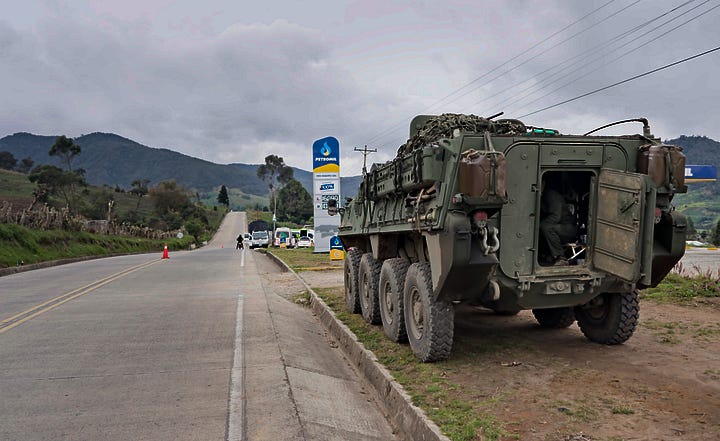
As we cycle past the billboard with the FARC graffiti and towards Santa Isabela, I reflect on how the presence of armed groups doesn't necessarily spell danger for travelers.1 Many of Colombia's most touristic places have a strong presence of armed groups. Seven hundred thousand people visit the coastal city of Santa Marta each year, most unaware of the silent war fought between two armed groups there.
Besides, the paint used to write “FARC-EP” on the billboard looked to be at least a few months old – likely written before the military dismantled the group here.
Yet the thought lingers: "Why hadn’t anyone tried to remove the paint if the group is gone?”
I ride into Santa Isabela on alert.
Over lunch, we ask locals about security on the road ahead and are assured, once more, that all is well.
After an uneventful afternoon of cycling past slopes planted with coffee and banana trees, we stop at an eco-finca that rents out rooms. Its freshly painted walls, wooden finishing, and general abundance contrast with the other houses we have seen over the past two days. The couple who owns the place lets us camp on their terrace.
"They don't like me in town," Marta,2 the wife, tells us, bitterness seeping into her voice. After spending decades running a small restaurant to save for her dream house, she now feels cast out by the town.
"They think that because we have a fincita that we're snooty or have lots of money."
I feel for her. She comes off as angry, scared, and paranoid, in turn. Marta tells us, for instance, that she hadn’t seen our Instagram message, sent earlier that day, asking to make a reservation. But if she had, she would have said no because she doesn't know us. She also warns against part of the route we have planned. Unable to put words to her fear, she simply shrugs: "bad people."
It makes me think back to a few weeks earlier when we cycled through Cachipay — a settlement so isolated that a muddy mountain road serves as its only connection to the outside world. In nearby towns we’d heard vague warnings about Cachipay (“they’re bad apples”), but found only a two-street hamlet with a tiny square, a covered sports field, and a single shop selling everything from boots to soap, doubling as a makeshift bar with empty beer crates piled high.
Passing through around noon, we found a group of locals already having a drunk debate, the noise of which carried onto the square. It created a sad atmosphere — the kind of place ambitious youth try to escape.
But dangerous? No. The people were friendly and invited us to the village party. When Anastasia's bike broke down after leaving, several locals stopped to offer help. When we realized we lost a water bottle and Anastasia went back to search for it, someone gave her a ride. Poverty does not equal danger.

Still, I heed Marta’s warnings and change our route, keeping an eye out for signs of anything abnormal. Soon, we pass more FARC graffiti.
About 20 kilometers before a hamlet called San Juan, a woman flags us down and asks where we’re headed. When we mention Ibagué, she makes shooting gestures, warning, "Be careful around San Juan... if you know what I mean."
We don’t know what she means, and she does not elaborate. Is this paranoia? fear of the unknow or of poverty? or a real threat?
Again, I consider the possible risks.
One, the woman is referring to the FARC dissidents. Maybe they still roam the area, but if so they pose little risk to us. Armed groups rarely target travelers at random.
Two, petty crime instead of an armed group. Petty criminals almost certainly exist in the towns, as they do everywhere, and they pose a threat if you’re not careful. But we’re careful and, besides, far from the population centers where they tend to strike.
Three, an unorganized splinter group that formed after the army “dismantled” the local FARC dissident faction, made up of now leaderless, but still armed, youth terrorizing the locals.
It’s a familiar pattern of "recycling violence” that I have seen across Colombia, including in Medellín, where we lived for nearly half a decade. There, the government allowed guerrilla groups to settle in poor neighborhoods to reintegrate during peace negotiations in the 1980s.
They came armed. When peace talks collapsed, the guerrillas departed but left weapons behind. Without ideological leadership, youth formed gangs — sometimes to protect neighborhoods against outside threats. The state's absence in these areas allowed the problem to fester. Despite multiple peace processes and a fall in general violence, over 300 gangs still roam Medellín today.
Groups like that – undisciplined and unpredictable – would pose the highest risk to us here. But surely, if it was that kind of threat we should, would have heard about.
This worst-case scenario, however unlikely, casts a shadow over the otherwise peaceful mountain landscape.
Suddenly, everything seems suspicious. Is the 12-year-old boy leaning against an electricity pole marked with "FARC-EP" graffiti a lookout? What about the 15-year-old who follows us on his bicycle for a kilometer before vanishing? And the man on the bridge, his gaze sharp and unreadable—is he watching us with ill intent or simply people watching, intrigued by a couple of foreigners?
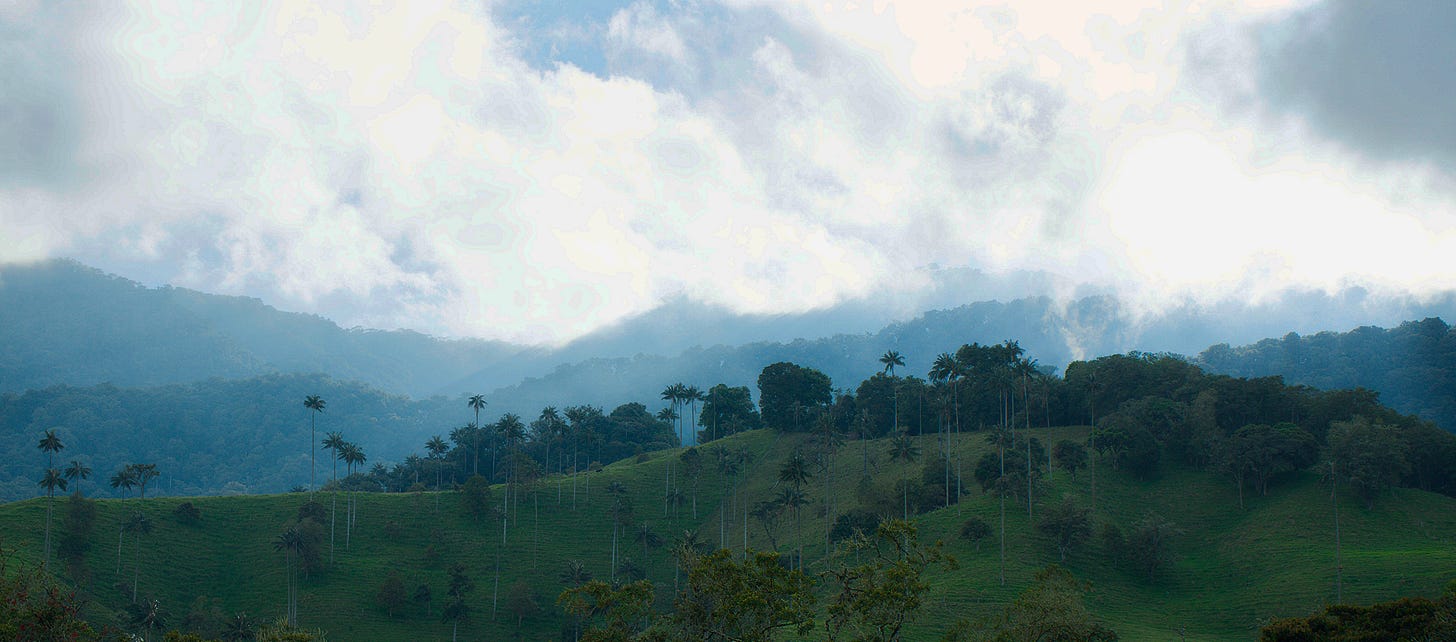
The last climb to San Juan is nearly deserted and I’m on alert, but not panicking. I reason that the real risks here – as in most Colombian towns on a Sunday afternoon – are the drunk campesinos3 driving home after too many shots of aguardiente.4
Exhausted from racing through the heat, we stop at a small shop for cold sodas about five kilometers from town.
We ask about security, and the friendly young woman behind the counter can’t help grinning: "Some tourist from Ibague got robbed a couple of weeks ago," she says while handing us ice-filled glasses for our room-temperature Gatorades. “It never happens, so people get excited.”
All the tension melts from my body. Coming from someone who lives close to town, her assessment of San Juan’s safety carries far more weight than the vague warnings from people who live on the other side of the hill.
We finish the climb to San Juan at a leisurely pace. The town sits like a pirate's nest atop the mountain. Its two streets are lively – packed with crowded bars – but not dangerous. Everything is suddenly sunnier, friendlier, and more beautiful.
The balance – between navigating real danger in Colombia’s countryside and not getting sucked into the prejudices and anxieties that have accumulated over decades of civil conflict – is a tricky one. This time, my paranoia had been just that.
Not to downplay the danger in these areas for local populations. Colombia counts over 8 million recognized victims of its internal armed conflict.
Might not be her real name. To be honest, we forgot her real name. But we’re pretty sure it’s Marta.
Campesino - a small-scale farmer or rural laborer who works the land, often in a traditional or subsistence way; Unlike the English word "peasant," which can sound outdated or derogatory, campesino in Latin America is often associated with pride, resilience, and a strong connection to the land and community.
Aguardiente - literally, “fire water.” A strong, clear liquor that tastes mostly anise.




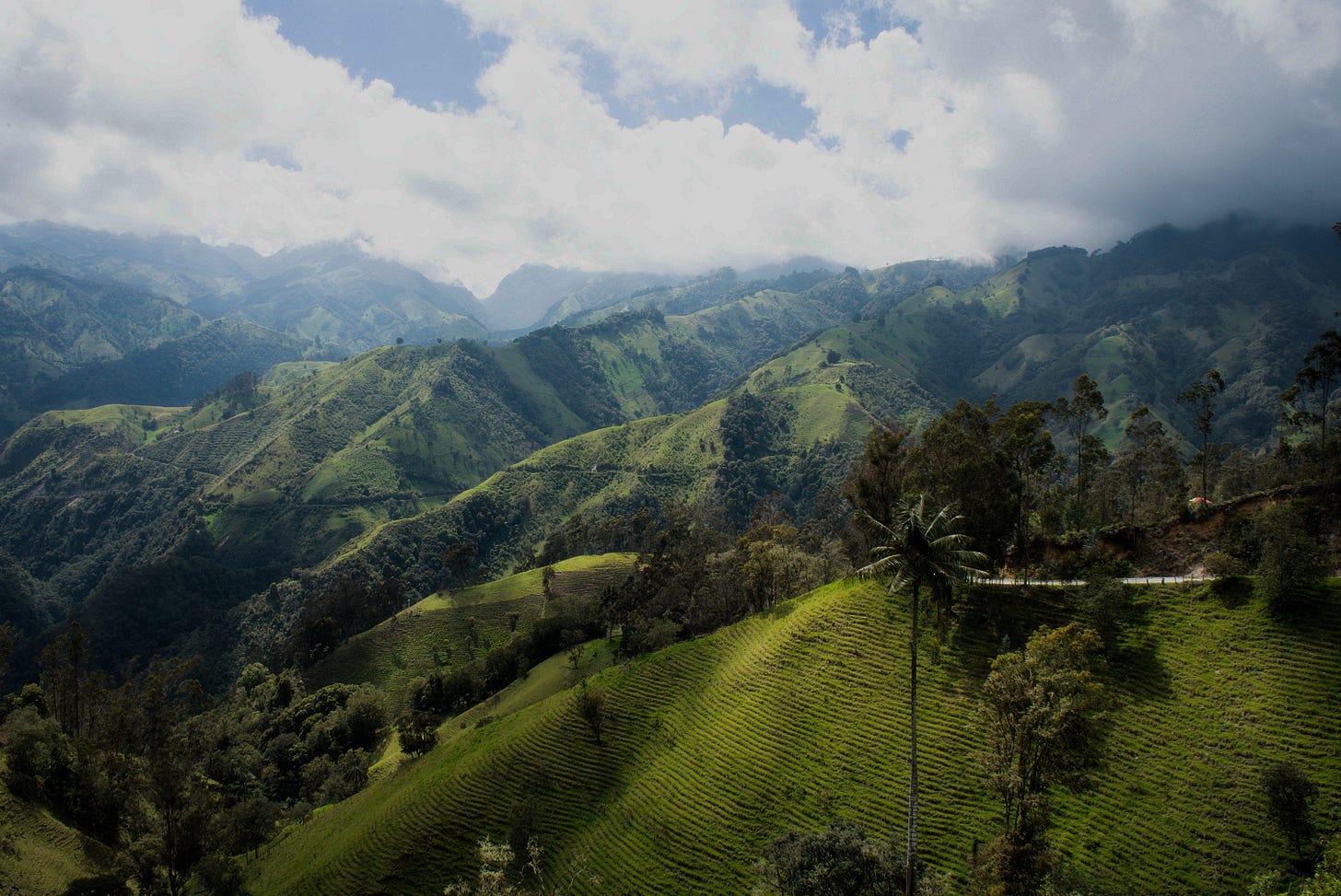
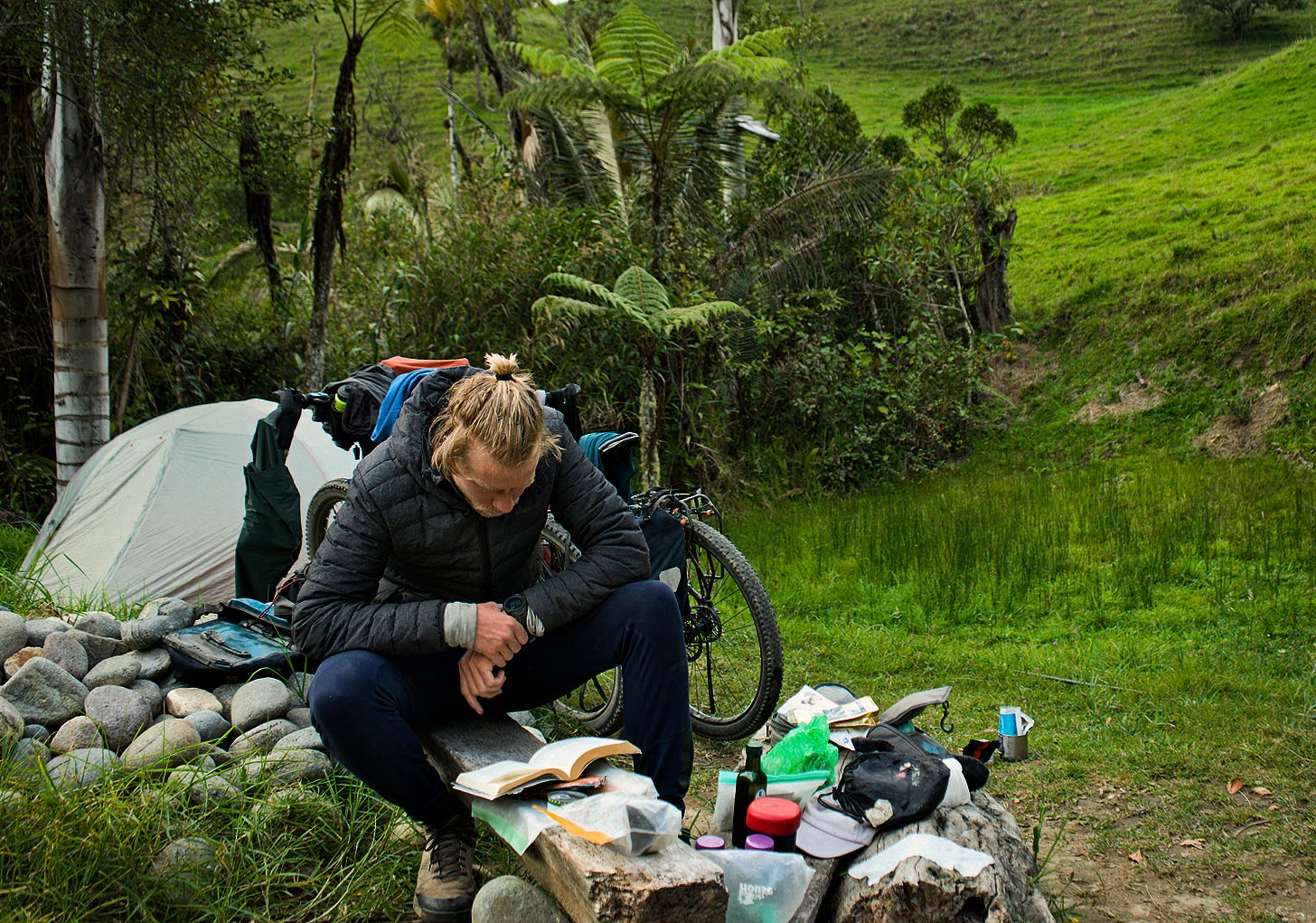
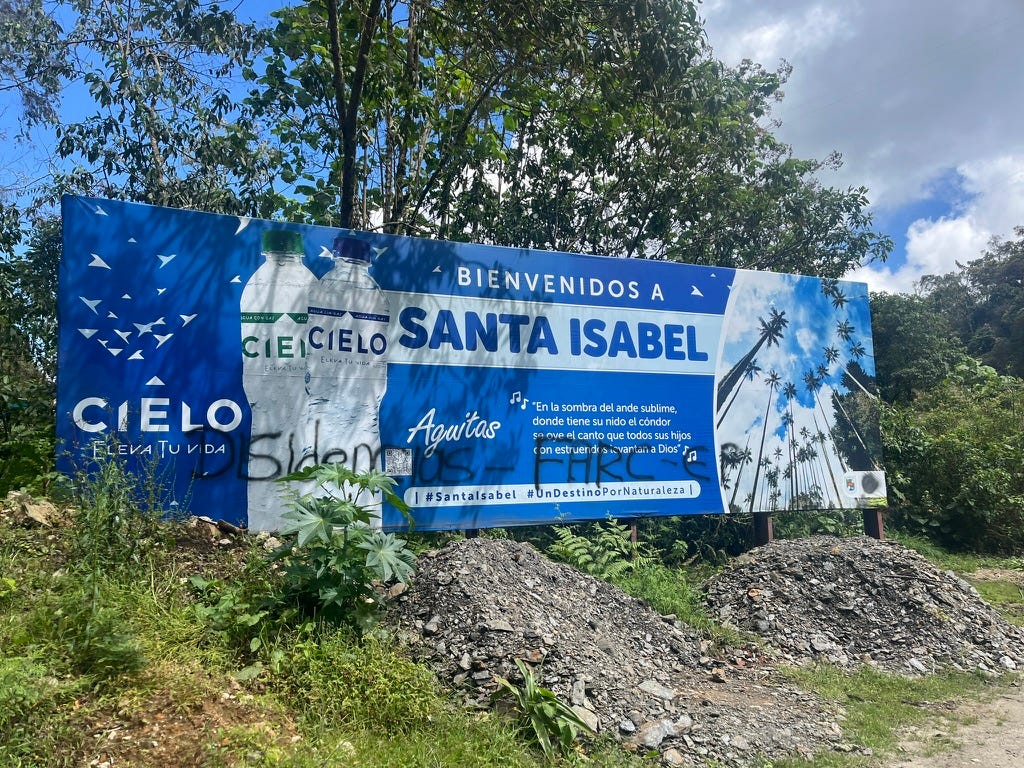
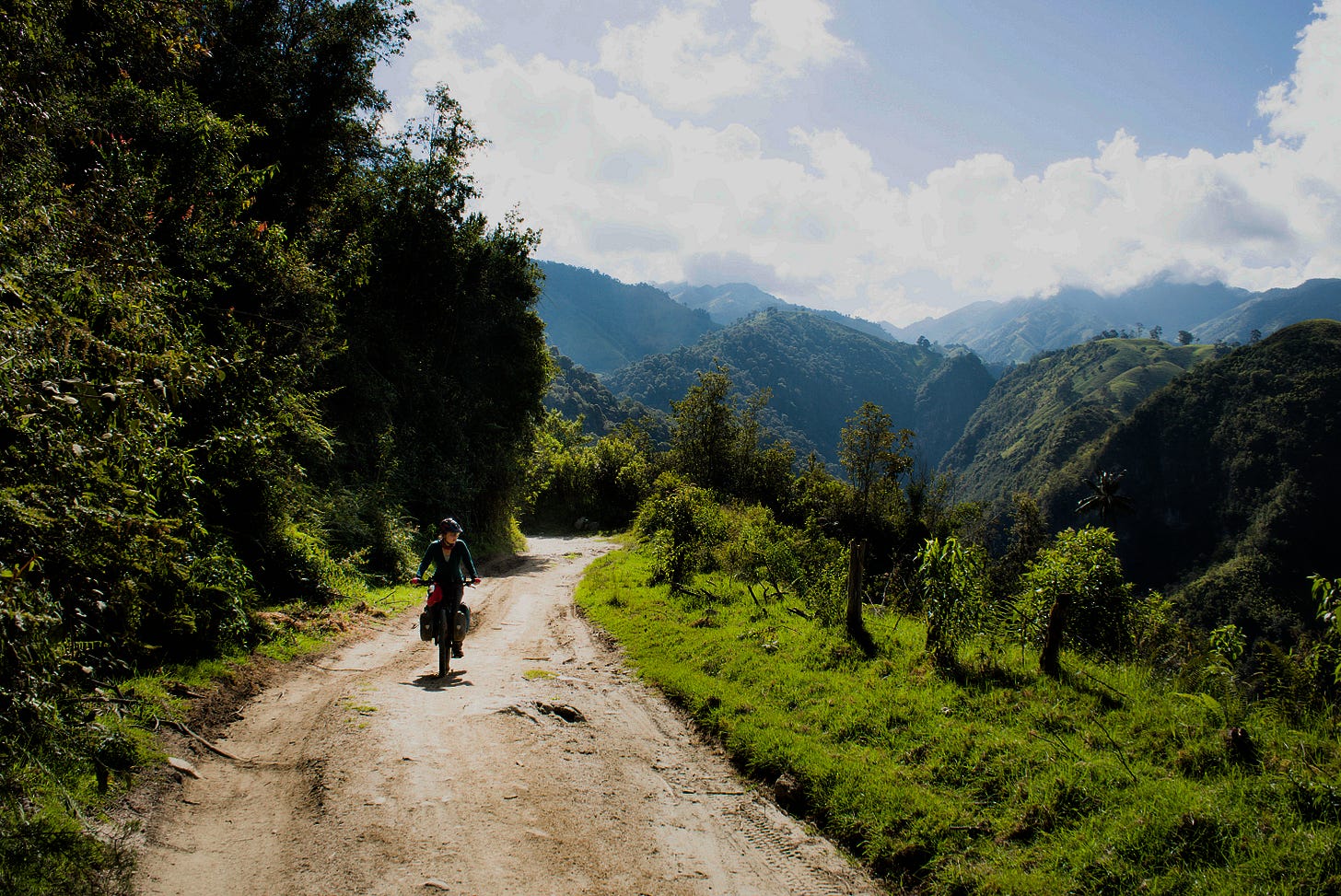
You’re writing completely emerges me in your journey and experiences. Well done! And well done on writing so nuanced and thoughtful about these safety considerations !
I liked it. You help me understand how it really feels there for a stranger in Colombia! Reminds me of Sinai, Egypt where armed groups was present but not any more. I like your reasonable attitude